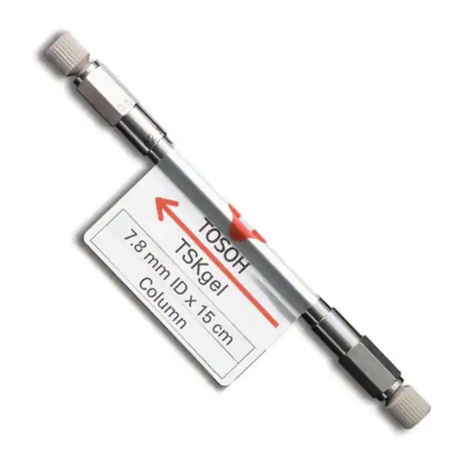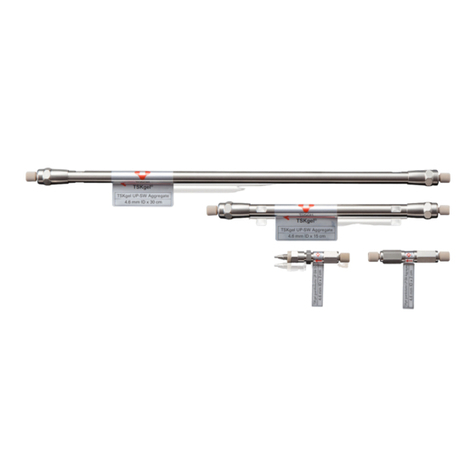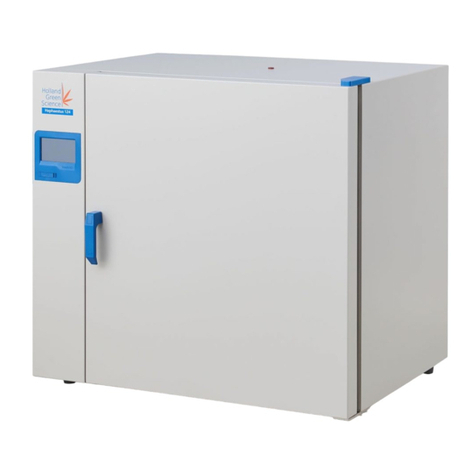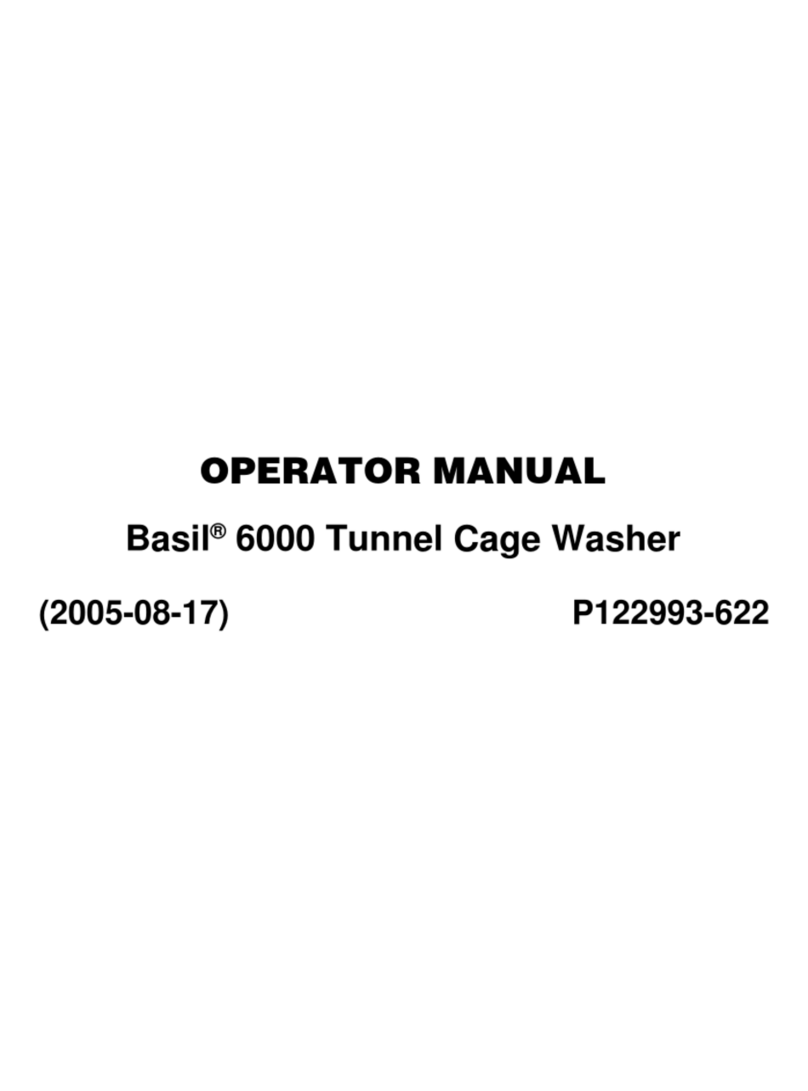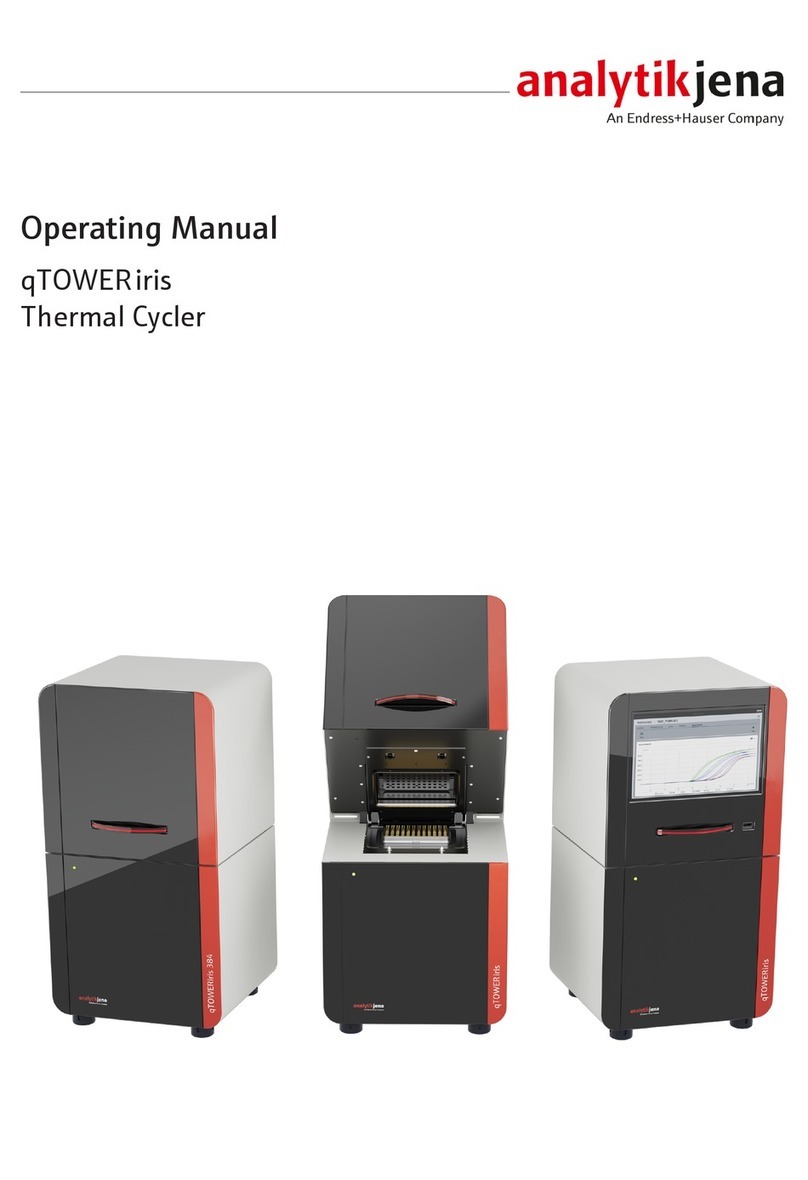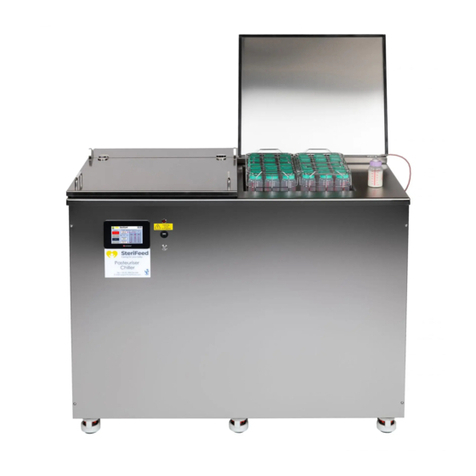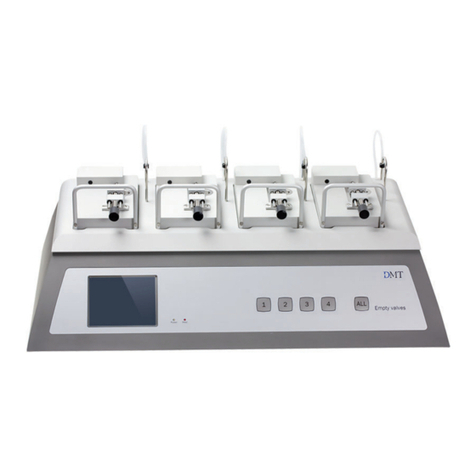TOSOH BIOSCIENCE TSKgel NH2-100 3mm User manual

Packed Columns for
Normal Phase Chromatography
TSKgel NH2
-
100 3μm
INSTRUCTION
MANUAL
Rev. CO067000

To help protect you and/or your property from potential damage, please read
this manual thoroughly before using the product.
Safety Precautions
[Notation Conventions]
Notation
WARNING
CAUTION
!
!
Explanation
!WARNING
Keep away from fire
Not taking proper precautions when using flammable solvents could result in
fire, explosion, or poisoning.
!CAUTION
Use only in well-ventilated areas
In case of insufficient ventilation, flammable and toxic solvents can cause fire,
explosion, or poisoning.
Do not spill solvents
Spillage and leakage can cause fire, electric shock, poisoning, injury, and
corrosion.
Wear appropriate protective gear when cleaning up a spill.
Wear protective eye gear and gloves
Organic solvents and acids should not come in direct contact with the skin.
Handle the package with care
Inappropriate handling may cause rupturing and/or splattering of the product.
Only use this product as intended
This product is for separation and purification. Do not use for any other
purpose.
Make sure compounds are safe
Check that obtained compounds and solutions after separation and purification
are safe.
Proper disposal
Dispose in accordance with local laws and regulations.
NOTE
Keep this manual with the product for future reference.
Indicates a hazardwith a medium level of risk which, if
not avoided, could result in death or serious injury.
Indicates a hazardwith a low level of risk which, if not
avoided, could result in minor or moderate injury.

Precautions: Shipping Solvents
Shipping solvent : CH
3
CN/H
2
O=85/15
First Aid
Handling
and
Storage
Waste
Disposal
Inhalation
Skin exposure
Eye exposure
Ingestion
Ventilation
Container
handling
Wear
appropriate
protective
equipment
Hazardous
substance
storage
Disposal
methods
General
considerations
Disposal
precautions
•Move the person to an area with fresh air.
Rinse the mouth with plenty of water.
•Call for medical attention immediately.
•Wash exposed area with plenty of soap and water.
•
Open eyes as wide as possible and rinse with clean
water for at least 15 minutes.
•Call for medical attention immediately.
•Rinse the mouth with plenty of water and call for
medical attention immediately.
•Provide adequate air ventilation to keep organic
vapor concentrations below approved level.
•Container may break if not handled with care.
•
Use solvent-resistant gloves and protective eye gear
when using this product. Use of gas mask, additional
protective clothing or rubber boots could be
appropriate when handling this product.
•If any flammable solvents are used for shipping or
storage, keep away from fire and open heat.
•
Follow local guidelines for disposal. This product can
be incinerated safely.
•Please pay attention to all safety precautions with
respect to the handling and storage of this product.
•
Assure that appropriate countermeasures are taken
when incinerating solvents that contain acetonitrile.
Fumes produced during incineration may contain
nitrogen oxides.

Precautions: Packing Material
First Aid
Handling
and
Storage
Waste
Disposal
Inhalation
Skin exposure
Eye exposure
Ingestion
Ventilation
Container
handling
Wear
appropriate
protective
equipment
Hazardous
substance
storage
Disposal
methods
General
considerations
Disposal
precautions
•Move the person to an area with fresh air.
Rinse the mouth with plenty of water.
•Call for medical attention immediately.
•Wash exposed area with plenty of soap and water.
•
Open eyes as wide as possible and rinse with clean
water for at least 15 minutes.
•Call for medical attention immediately.
•Rinse the mouth with plenty of water and call for
medical attention immediately.
•
Provide adequate air ventilation to keep organi
c
vapor concentrations below approved level.
•Container may break if not handled with care.
•
Use solvent-resistant gloves and protective eye gear
when using this product. Use of gas mask, additional
protective clothing or rubber boots could be
appropriate when handling this product.
•If any flammable solvents are used for shipping or
storage, keep away from fire and open heat.
•
Dispose in accordance with local laws and regulations.
•Please pay attention to all safety precautions with
respect to the handling and storage of this product.
•Fumes produced during incineration may contain
nitrogen oxides.
Aminoalkyl group functionalized silica gel

Table of Contents
01. General Information ……………………………………………………… 1
02. Unpacking …………………………………………………………………… 1
03. Column Parts ……………………………………………………………… 1
04. Column Installation ………………………………………………………… 2
05. Column Maintenance ……………………………………………………… 3
06. Solvent Selection and Preparation ……………………………………… 3
07. Flow Rate …………………………………………………………………… 4
08. Temperature ………………………………………………………………… 5
09. Sample Preparation ……………………………………………………… 5
10. Measurement of Number of Theoretical Plates
and Asymmetry Factor …………………………………………………… 5
11. Guard Column ……………………………………………………………… 6
12. Troubleshooting …………………………………………………………… 8
13. Quality Specification and Warranty ……………………………………… 8
14. Column Cleaning Solutions ……………………………………………… 9

−1−
Published, February 2009
1. General Information
TSKgel NH2-100 3μm packed columns have been optimized for high performance
NPC and HILIC. Please read this INSTRUCTION MANUAL carefully and use the
column as recommended in order to make effective use of its high performance.
2. Unpacking
Check that there is no visible damage to the outer package or the column.
Figure 1 Appearance of the Package
Check that the following documents are shipped with the column.
1) INSTRUCTION MANUAL
1 copy
2) INSPECTION DATA 1 copy
3. Column Parts
1) Analysis column
Figure 2 Column Parts (1)
Inlet Outlet
Name Plate
End Fitting
End Plug
FLOW

−2−
2) Guard column
4. Column Installation
(1) Confirm the correct product name is listed on the column label.
(2) Each column is equipped with a union nut enabling a connection to a 1/16,, O.D.
capillary tubing. The union nut is designed for American standard compression
plugs and ferrules.
(3) Confirm the flow direction on the column label or on etched onto the column as
shown in Figure 2. Solvent should flow only into the column from the inlet side.
The columns are designed so that optimal resolution is obtained when the flow
direction is as indicated on the column.
(4) Purge all air out of the tubing using the mobile phase. This helps to prevent any
air from entering the column. Any air in the tubing causes serious deterioration
of column efficiency.
(5) Initially set the solvent flow rate at one-half of the intended flow rate. Make sure
that the solvent is flowing freely out of the end of the tubing from the injector.
(6) Remove the end plugs from the column and connect the inlet of the column to
the tubing from the injector. Make sure that the tubing is fully inserted into the
compression fittings before tightening in order to minimize dead volume. Always
keep dead volume to the absolute minimum throughout the entire system.
(7) After the solvent flows from the outlet of the column, connect the column to the
detector.
Cartridge holder (Inlet) Column-extracting toolGuard column Cartridge holder (Outlet)
Cartridge holder (Inlet) Guard column Cartridge holder (Outlet)
Figure 3 Column Parts (2)
3.2 mm(I.D.)× 1.5 cm(L)
2.0 mm(I.D.)× 1 cm(L)

−3−
(8) Start pumping the solvent at a flow rate less than one-half of the final flow rate.
Avoid a sudden pressure surge to the column.
(9) The columns are very sensitive to pressure pulsing. A pulseless pumping system
should be used.
(10) The columns should be equilibrated before use by allowing at least 10 column
volumes of solvent to pass through the column.
(11) If a mixture of water or aqueous acetate solution with water-soluble organic
solvent (e.g., acetonitrile) is used as a mobile phase, install a guard column and
routinely clean the main analytical column in order to prevent the accumulation
of impurities on the column. Replacing the guard column and cleaning the
analytical column are described in section 11-3 Guard Column Replacement.
(12) Elution times depend on the counter-anion associated with the amino group on
the packing material. Take care so that the counter-anion is sufficiently
exchanged when the mobile phase is changed, especially when used for LC/
MS. The procedure for exchanging the counter-anion is described in section 6
Solvent Selection and Preparation.
5. Column Maintenance
(1) If the column is used in routine daily operation, it is permissible to leave the
mobile phase in the column overnight if the mobile phase is not corrosive. If
halides are included in the mobile phase, it is better to replace the mobile phase
with a suitable solvent (for example "packed solvent" shown in the INSPECTION
DATA sheet) even for one night.
(2) If the column will not be used for several days, it should be stored as follows:
a) Purge the system with the "packed solvent" shown in the INSPECTION DATA
sheet at a flow rate one-half of the operating flow rate as shown in Table 1
(purge the system with distilled or ion-exchanged water if you have used a
buffer solution, as a mobile phase, which contains salt in considerably high
concentrations).
b) Remove the column from the system and keep the ends of the column tightly
capped with the end plugs supplied with the column.
c) Store the column at a relatively constant temperature in its original shipping
container. Take care not to allow the column to freeze during storage.
(3) The performance of the cartridge column may be decreased by repeated
removal from the cartridge holder. TOSOH recommends that the cartridge
column is kept in the cartridge holder with the both ends capped with end plugs.
6. Solvent Selection and Preparation
(1) The shipping solvent is 85 % acetonitrile in water. Before using the column, the

−4−
solvent should be replaced with an appropriate mobile phase for analysis. When
salt-containing buffers are used as a mobile phase, purge the column for at least
1 h with salt solution containing 5 % of a water-soluble organic solvent (e.g., 200
mmol/L ammonium formate/ acetonitrile= 95/5, v/v) to exchange the counter-
anion associated with the amino group on the packing material. When used for
LC/MS, special care must be taken so that the counter-anion is sufficiently
exchenged. Solvent replacement should be performed at a flow rate one-half of
the normal operating flow rate, or at a pressure below the maximum pressure
shown in Table 1. Note that a drastic change of solvent composition or frequent
solvent replacements may shorten the lifetime of the column.
(2) pH range : 2.0-7.5
The pH range should be selected based on the stability of both the packing
material and the column itself. At a pH below pH 2.0, the ligand binding sites on
the silica-based support are subject to hydrolysis by acidic solutions. Above pH
7.5, the silica backbone may dissolve, leading to rapid column failure.
Additionally, the stainless steel of the column is subject to corrosion at a low pH
particularly when using halides.
(3) The solvent should be filtered through a 0.5μm filter in order to prevent the
accumulation of small particles. The performance of semi-micro columns quickly
deteriorates when exposed to small-particle contamination. Thus, it is highly
recommended that an in-line filter containing a membrane of 0.2 〜0.5μm pore
size is inserted between the pump and the sample injector.
Line filter
Part No. 0014594 Filter assembly
Part No. 0006280 Fluoropore filter (0.45μm, package of 100)
(4) Solvents should be degassed to ensure optimal flow through the system.
7. Flow Rate
The flow rate should be selected based on the desired resolution, column life and
assay time. Although the TSKgel NH2-100 3μm is designed for high-speed analysis,
TOSOH recommends that this column is operated at a rather low flow rate because
better resolution and extended column life can be expected. A suitable flow rate and
the maximum flow rate depend on the organic solvent in the mobile phase. When
using the TSKgel NH2-100 3μm for the first time, the flow rate should be set at a
linear velocity of 6 cm/min (0.20 mL/min for 2.0 mm(I.D.) and 1.00 mL/min for 4.6
mm(I.D.)). The column life may be reduced if the column is operated near the
maximum pressure. The maximum pressure for the TSKgel NH2-100 3μm is shown
in Table 1. The viscosity of the solvent must be considered when selecting the flow
rate, too.

8. Temperature
The column should be operated in a temperature range of 10 - 50 ℃.
9. Sample Preparation
(1) Preparation of Sample Solution
Prepare the sample solution immediately prior to injection by dissolving the
sample into the solvent that is used as an eluent. The eluent should be
optimized by adjusting the pH, salt concentration, etc. so that the sample is
completely dissolved, otherwise the column lifetime may be reduced by
unexpected precipitation of sample on the column.
(2) Filtration of Insoluble Particles
The sample solution should be filtered with a micropore-filter (0.5μm). Even
though no particles can be detected by the naked eye, insoluble particles may
exist in the sample.
10. Measurement of Number of Theoretical Plates
and Asymmetry Factor
(1) Number of theoretical plates (N)
The N is calculated using an unretained molecule by the half-peak width method
as shown in Figure 3 and the following equation:
Figure 3 Calculation of Number of Theoretical Plates
−5−
Ve
h
W
Injection
1/2 1/2h
Table 1 Maximum Pressure
Part No.
0021967
0021968
0021969
0021970
2.0×5
2.0×15
4.6×5
4.6×15
15
20
5
15
TSKgel NH2-100 3μm
〃
〃
〃
Maximum
Pressure
(MPa)
Column Size
mm(I.D.)×cm(L)
Type

−6−
N=5.54(Ve/W1/2)2
where:
Ve
: Elution time
W1/2 : Width of peak at half-height
h
: Peak height
N : Number of theoretical plates/column
(2) Asymmetry factor (As)
The asymmetry factor is calculated according to Figure 4 and the following
equation:
Figure 4 Calculation of Asymmetry Factor
As=b/a
(3) The N and As should be measured with an instrument with small dead volume.
(4) The N and As are mentioned in the INSPECTION DATA sheet together with the
experimental conditions.
11. Guard Column
Fundamental keys to prevent problems have been outlined in Section 4 to 9. When
impurities that tend to adsorb onto the packing material are present in a sample,
they are typically adsorbed at the inlet side of the column and gradually accumulate
causing a reduction in the number of theoretical plates and a decrease in column
performance.
In such cases the original column performance can be maintained by connecting a
guard column between the injection valve and the analytical column. The guard
column should be replaced when the performance deteriorates as a result of the
adsorption of such a material to the guard column. A guard column can not be used
in place of analytical column.
The use of a guard column will not improve the resolution obtained on the analytical
column.
Ve
h
a b
Injection
1/10h

11-1 Effect of Guard Column Installation
(1) Contamination of the analytical column can be prevented by the removal of
adsorptive or insoluble materials in the sample.
(2) Pressure shock, due to pump pulsation, to the analytical column should be
avoided.
11-2 Type and Selection of Guard Columns
Guard columns specifications are shown in Table 2.
Cartridge holders are shown in Table 3.
11-3 Guard Column Replacement
Since the guard column has limited adsorbtion capacity, it has a finite lifetime.
The guard column must be replaced before contamination extends to the main
analytical column.
The frequency of the guard column replacement can not be standardized because it
depends on various factors such as application, sample properties (properties of
principal components, properties and concentrations of impurities, etc.), sample
loading, solvents, flow rate, etc.
Since an increase in the system pressure during operation could indicate clogging
at the end fitting of the guard column or contamination of the gel, it is a good idea to
replace the guard column when the pressure has increased.
In general, when changes in the results are observed, the guard column should be
replaced immediately.
−7−
Table 3 Cartridge Holder
Part No.
0019308
0019018
2.0×1
3.2×1.5
Cartridge holder (2.0×1)
Cartridge holder (3.2×1.5)
Column Size
mm(I.D.)×cm(L)
Type
Note : Two nuts, two ferrules and two small pieces of tubing are attached to the cartridge
holder as accessories.
In addition, column-extracting tool is attached to Part No. 0019018
Table 2 Cartridge Column
Part No.
0021971
0021972
2.0×1
3.2×1.5
TSKgel NH2-100 3μm
(2.0×5, 2.0×15)
TSKgel NH2-100 3μm
(4.6×5, 4.6×15)
TSKguardgel NH2-100 3μm
TSKguardgel NH2-100 3μm
Applied Column
mm(I.D.)×cm(L)
Column Size
mm(I.D.)×cm(L)
Type
Note : Three cartridge columns are packed in a box.

−8−
If a mixture of water or aqueous acetate solution with water-soluble organic
solvents (e.g., acetonitrile) are used as a mobile phase, the guard column should
be replaced after approximately 70 h of usage (for 4.6 mm(I.D.) columns) or 40 h of
usage (for 2.0 mm(I.D.) columns). Additionally, the main analytical column should
be cleaned when the guard column is replaced (for 4.6 mm(I.D.) columns) or every
20 h of usage (for 2.0 mm(I.D.) columns). Cleaning should be done by purging the
column for 0.5 h with a 5% water-soluble organic solvent (e.g., 5% acetonitrile in
water) at a flow rate of one-half the operating flow rate, or at a pressure below the
maximum pressure as shown in Table 1.
12. Troubleshooting
(1) Clogging of the inlet filter
Increased pressure or decreased flow rate are indicative of a clogged inlet filter.
In this case, clean the end fitting by reversing the flow direction through the
column (The flow rate must be kept below one-half of the operating flow rate as
shown in Table 1).
(2) Contamination
Continuous column operation may lead to gradual accumulation of strongly ionic
compounds or hydrophobic compounds.
This is demonstrated by changes in chromatographic behavior and loss of
resolution. Adsorbed materials may be removed from the column by injections of
solvent with a different polarity from the operating mobile phase.
(3) Bed Compression
Failure to properly clean the analytical column may result in the formation of a
void at the column head due to bed compression.
This failure can be confirmed by carefully removing the column end and
inspecting the bed.
13. Quality Specification and Warranty
13-1 INSPECTION DATA
The inspection conditions and the results of each individual column are shown on
the INSPECTON DATA sheet. The number of theoretical plates is expressed as the
number per column.
The inspection results are different for each column.
13-2 Quality Specifications
TSKgel NH2-100 3μm are delivered according to the specifications as shown in
Table 4.
13-3 Warranty
Upon receiving the column, check that the column is not damaged and test the

performance according to Section 10. If the guaranteed specifications in Table 4
can not be obtained, contact a local TOSOH representative within 30 days. Note
that the column lifetime is not guaranteed.
14. Column Cleaning Solutions
(1) Sample property : Hydrophobic compounds
Water soluble organic solvents such as 70-95 % acetonitrile and methanol in
aqueous buffer
(2) Sample property : Hydrophilic compounds
Water soluble organic solvents such as 5-10 % acetonitrile and methanol in
aqueous buffer
−9−
Table 4 Guaranteed Specifications
Part No.
0021967
0021968
0021969
0021970
2.0×5
2.0×15
4.6×5
4.6×15
4,000
15,000
6,000
18,000
0.90-1.35
0.90-1.35
0.90-1.30
0.90-1.30
TSKgel NH2-100 3μm
〃
〃
〃
Number of
theoretical plates
(TP/Column)
Column Size
mm(I.D.)×cm(L)
Asymmetry
factor
Type

HLC, TSK-GEL, TSKgel, TSKgel SuperMultipore, BioAssist, Enantio, PStQuick, Enviropak,
TOYOPEARL, ToyoScreen, TOYOPEARL GigaCap, TOYOPEARL MegaCap, TOYOPEARLPAK
and TOYOPAK are registered trademarks of TOSOH CORPORATION in Japan and other countries.
This manual may not be reprinted or copied in whole or in part without written consent of TOSOH
CORPORATION. The contents of the manual are subject to change without notice.
Printed in Japan
TOSOH CORPORATION
BIOSCIENCE DIVISION
Shiba-Koen First Bldg.
3-8-2 Shiba, Minato-ku, Tokyo 105-8623, Japan
Phone: +81-3-5427-5180 Fax: +81-3-5427-5220
Web site: http://www.separations.asia.tosohbioscience.com/
HPLC database: www2.tosoh.co.jp/hlc/hlcdb.nsf/StartE?OpenForm
TOSOH BIOSCIENCE GmbH
Zettachring 6, 70567 Stuttgart, Germany
Phone: +49-711-132570 Fax: +49-711-1325789
E-mail: [email protected]
Web site: http://www.tosohbioscience.com/
TOSOH BIOSCIENCE
SHANGHAI CO., LTD.
Room 301, Plaza B, No.1289 Yi Shan Road,
Xu Hui District, Shanghai 200233, China
Phone: +86-21-3461-0856 Fax: +86-21-3461-0858
E-mail: [email protected]
Web site: http://www.separations.asia.tosohbioscience.com/
TOSOH ASIA PTE. LTD.
63 Market Street #10-03 Singapore 048942
Phone: +65-6226-5106 Fax: +65-6226-5215
E-mail: [email protected]
Web site: http://www.separations.asia.tosohbioscience.com/
TOSOH BIOSCIENCE LLC
3604 Horizon Drive Suite 100,
King of Prussia, PA 19406, USA
Phone: +1-800-366-4875 Fax: +1-610-272-3028
E-mail: [email protected]
Web site: http://www.tosohbioscience.com/
Packed Columns for Aqueous
Size Exclusion Chromatography
TSKgel SuperMultiporePW-N
TSKgel SuperMultiporePW-M
TSKgel SuperMultiporePW-H
TSKgel SuperOligoPW
INSTRUCTION
MANUAL
Rev. CO073003


Rev. CO067000A0
Published in February, 2010
Supplemental Information related to TSKgel NH2-100 3μm columns
INSTRUCTION MANUAL for TSKgel NH2-100 DC 3μm (4.6 mm(I.D.), 5 cm(L))
To help protect you and/or your property from potential damage and ensure personal safety,
please read the “Precautions” which are printed in the beginning of the “TSKgel NH2-100
3μm” INSTRUCTION MANUAL thoroughly before using the above TSKgel NH2-100 DC
3μm column.
For this TSKgel NH2-100 DC 3μm column, please read section 1, section 3 (1), section 7
(Table 1), and section 13 (Table 4) on this supplemental information sheet instead of the
corresponding sections you find on the “TSKgel NH2-100 3μm” INSTRUCTION MANUAL.
Please read section 4 (13) in addition to those in each section on the “TSKgel NH2-100
3μm” INSTRUCTION MANUAL.
1. General Information
This TSKgel NH2-100 DC 3μm column has the outlet end fitting with an external male
connector so that it can be easily connected to another HPLC column.
In this supplemental information sheet, only those instructions different from the other
TSKgel NH2-100 3μm columns are included. Please refer to the “TSKgel NH2-100 3μm”
INSTRUCTION MANUAL regarding instructions which are not mentioned in these
document.
3. Column Parts
1) Analysis column
Figure 2 Column Parts
Inlet Outlet
End Plug (Inlet)
End Fitting (Inlet)
Name Plate Spacer Ring
End Fitting (Outlet) End Plug (Outlet)
FLOW
Inlet Outlet
End Plug (Inlet)
End Fitting (Inlet)
Name Plate Spacer Ring
End Fitting (Outlet) End Plug (Outlet)
FLOWFLOW

4. Column Installation
(13) To directly connect the TSKgel NH2-100 DC 3μm column to another HPLC column,
finger-tighten the connection between the outlet of the TSKgel NH2-100 DC 3μm
column and the inlet of the second column, and then tighten with appropriate
wrenches until you feel some resistance. Check for solvent leaks from the connection.
The following operations may cause permanent deterioration in column efficiency.
a) Damage to the tip of the outlet end fitting caused by mechanical force such as
accidentally dropping the column.
b) Tightening the connection between the two columns to more than 2.0 Nm of
torque (more than about 30 degrees).
c) Repeated connections and disconnections of the two columns. It is recommended
that the two columns are kept connected during storage.
d) Connection to other companies’ columns not compatible with TOSOH’s.
7. Flow Rate
Table 1 Maximum Pressure
Part No. Type Column Size
mm(I.D.)×cm(L)
Maximum
Pressure
(MPa)
0021999 TSKgel NH2-100 DC 3μm 4.6×5 5
11. Guard Column
11-2 Type and Selection of Guard Columns
Table 2 Cartridge Column
Part No. Type Column Size
mm(I.D.)×cm(L)
Applied Column
mm(I.D.)×cm(L)
0021972 TSKguardgel NH2-100 3μm3.2×1.5 TSKgel NH2-100 DC 3μm
(4.6×5)
Note: Three cartridge columns are packed in a box.
13. Quality Specification and Warranty
13-3 Warranty
Table 4 Guaranteed Specifications
Part No. Type Column Size
mm(I.D.)
×
cm(L)
Number of
Theoretical plates
(TP/Column)
Asymmetry
factor
0021999 TSKgel NH2-100 DC 3μm4.6×5 6,000 0.90~1.30
TOSOH CORPORATION
BIOSCIENCE DIVISION
Table of contents
Other TOSOH BIOSCIENCE Laboratory Equipment manuals
Popular Laboratory Equipment manuals by other brands
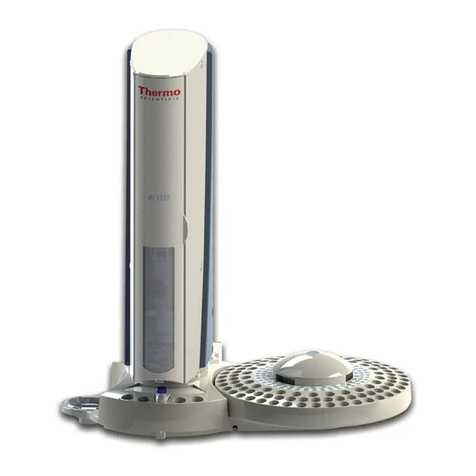
Thermo Scientific
Thermo Scientific AI 1310 user guide
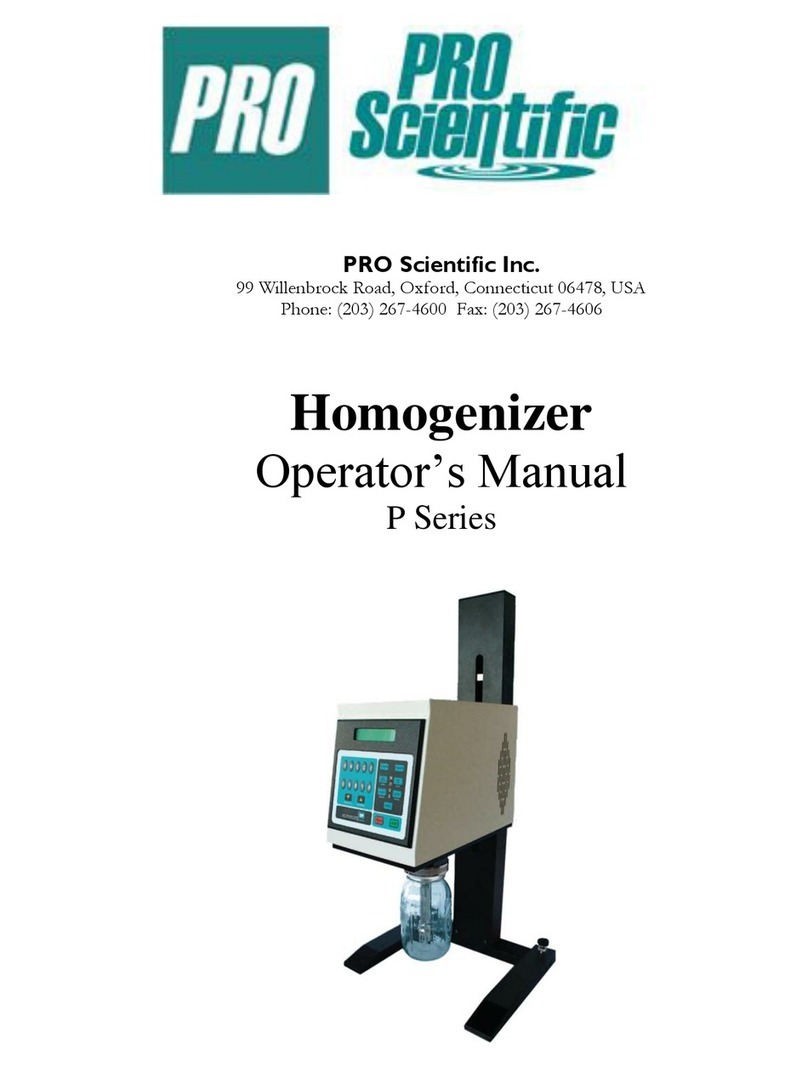
PRO Scientific
PRO Scientific P Series Operator's manual
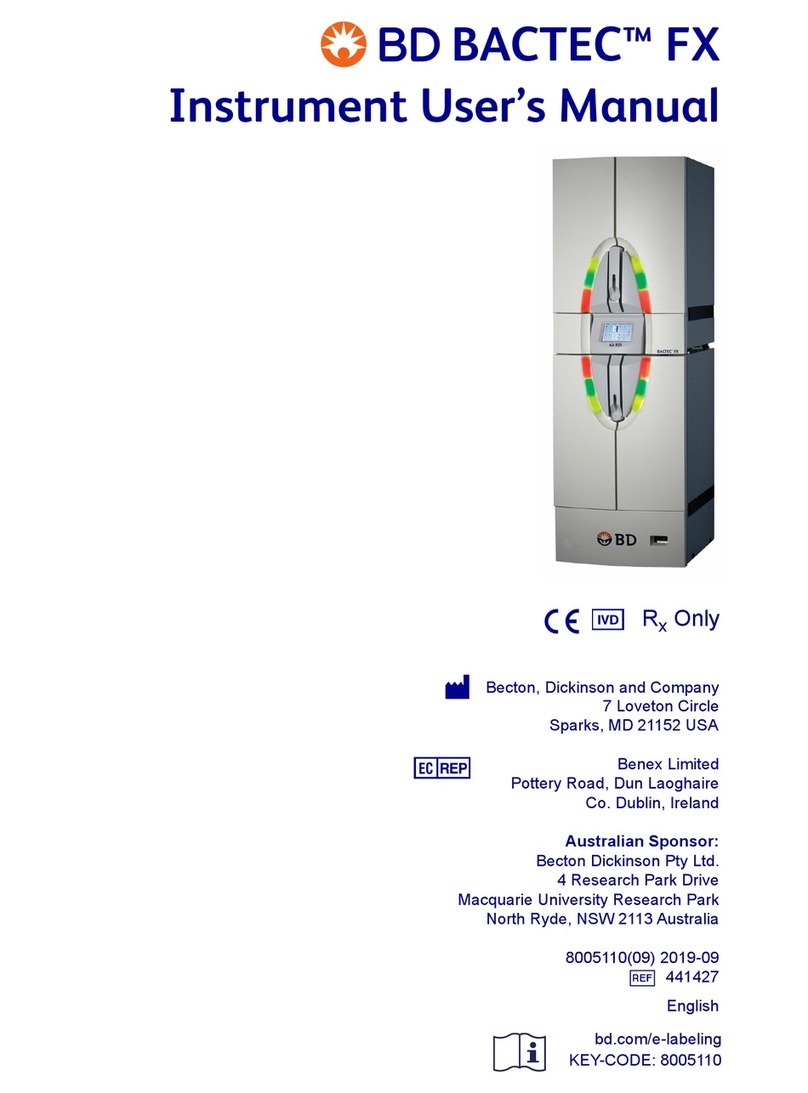
BD
BD BACTEC FX user manual
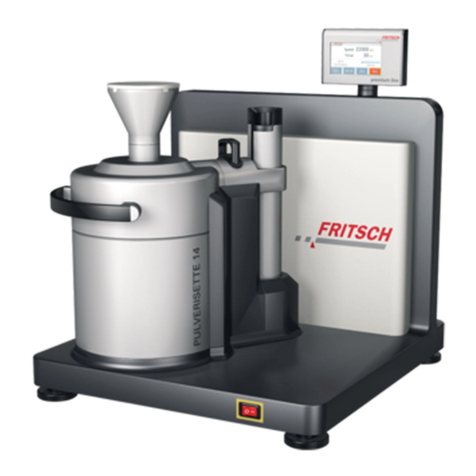
Fritsch
Fritsch premium PULVERISETTE 14 operating instructions
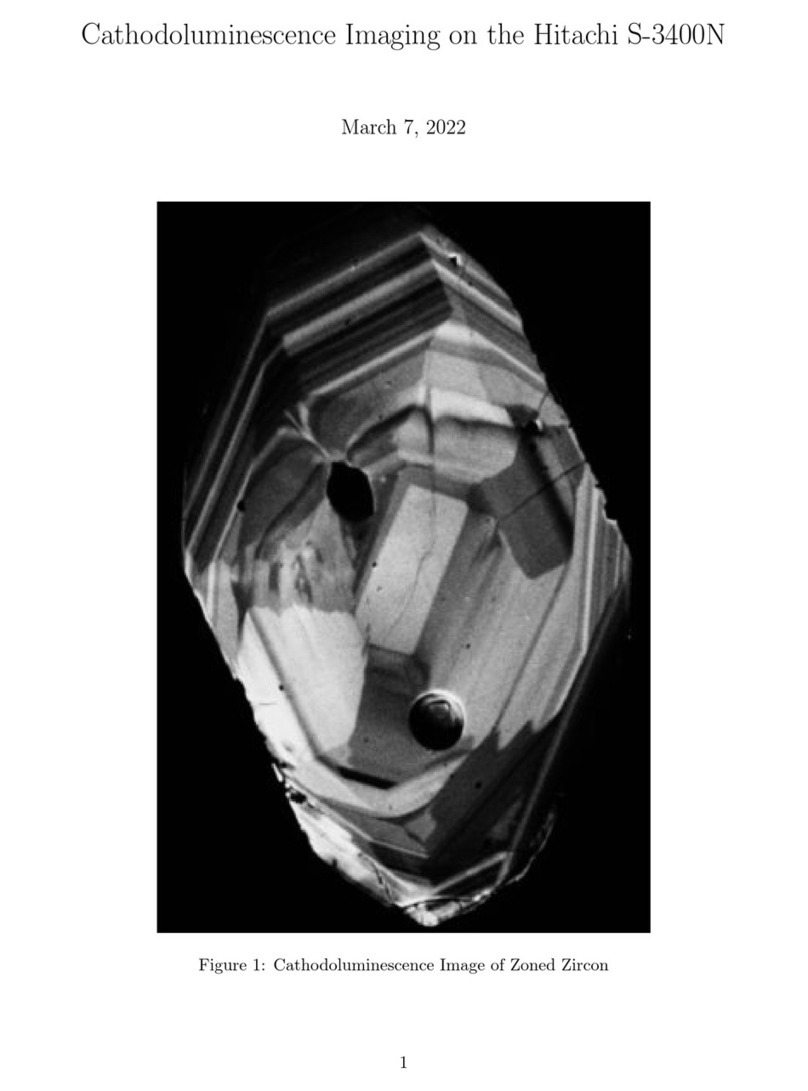
Hitachi
Hitachi S-3400N quick start guide
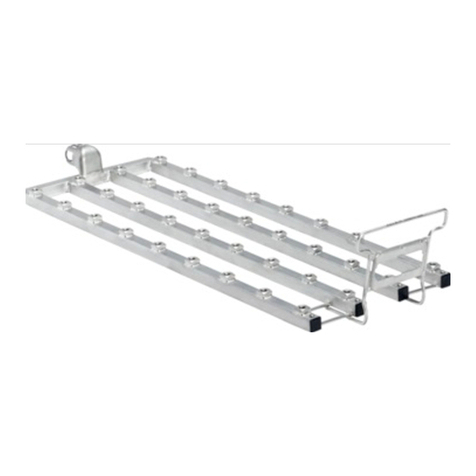
Miele professional
Miele professional A 620 operating instructions
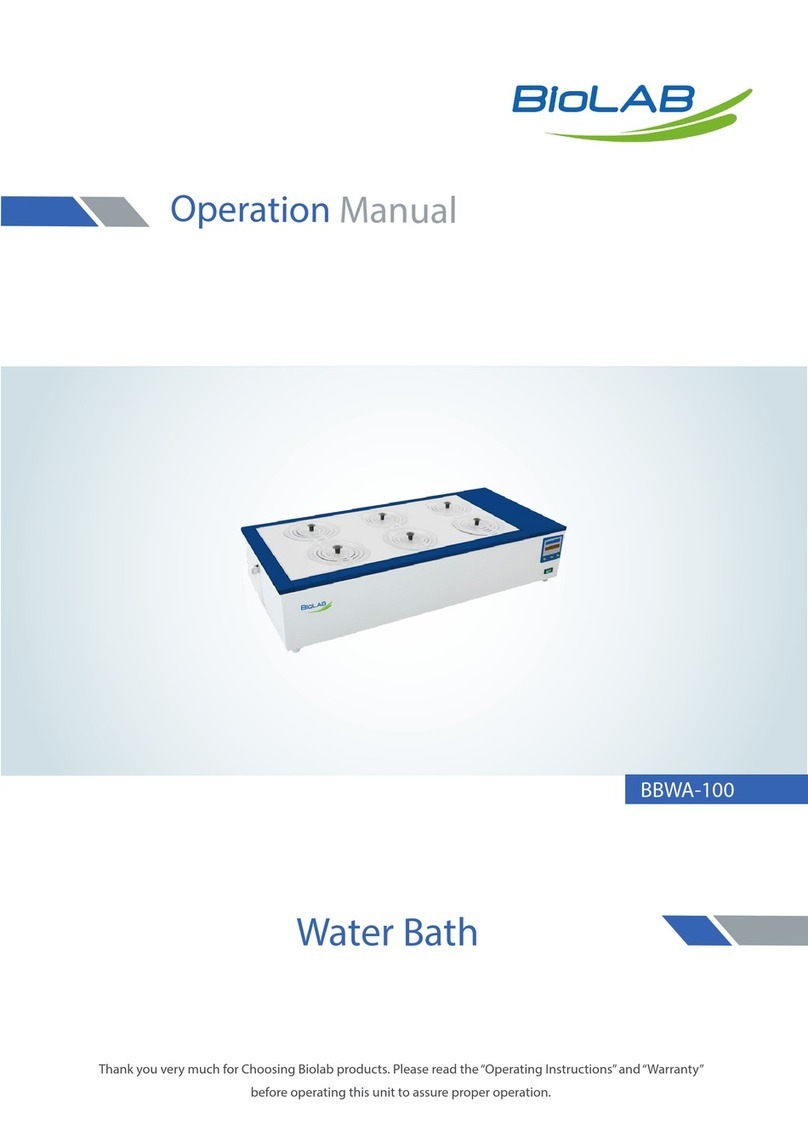
BioLAB
BioLAB BBWA-100 Operation manual

Deltec
Deltec 1500 Series operating instructions

Tecno-gaz
Tecno-gaz Multisteril Fast Technical manual

Integra
Integra Evolve 3011 operating instructions
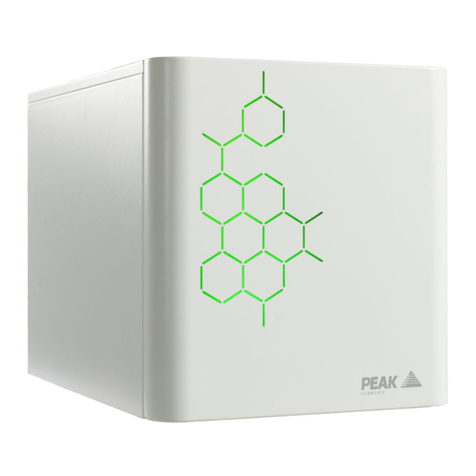
Peak Scientific
Peak Scientific Precision Zero Air Series user manual
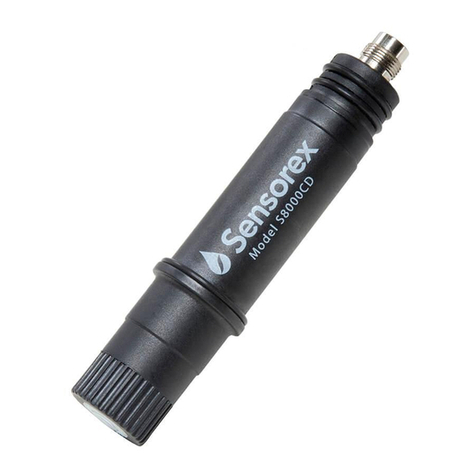
Sensorex
Sensorex 8000 Series Product Instruction Sheet
